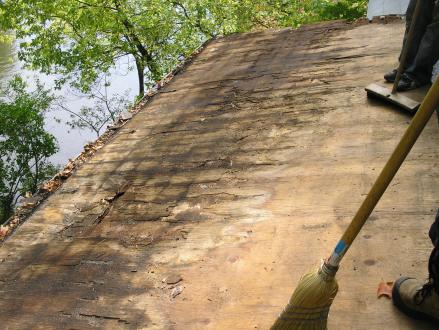If you ever watched a really good roofing crew at work, you’ll note a number of things about them:
- They are not hurrying, but are moving purposefully.
- Everything seems to be progressing in a clock-work manner.
- The workers are properly secured and are using the right tools.
- The work trailers or trucks are neat and well organized.
- The work site is reasonably clean
- There’s not a lot of loud yelling and running around.
- The work is continued until done.
- If bad weather happens, the team is prepared.
However, if you watch a more “average” crew, you’ll see some of the following:
- Some are working very hard, others are barely moving
- There’s a lot of yelling
- Working materials are all over the place
- The workplace is a mess (and stays a mess at the end of the workday)
- The work trailer/truck is a mess
- The workplace feels like a “Jackass” movie set
- The work is done intermittently – with absences of days between activity (maybe due to visits to the hospital?)
- No one is in charge (the anarchy model) or one person is doing all the directing (the dictator model).
- There doesn’t seem to be a clear logic to the work being done (waddasyamean, the waterproofing is UNDER the shingles? Hey, who knew?).
Do you see the pattern? The first group knows the sequence of work, uses the right tools, work in a safe way, and are prepared for the unpredictable things. They work as a team. The second does not have the experience or knowledge of how the work should flow, or just don’t care enough. They work as a bunch of guys who need a job. Which group do you think will give the higher quality?
So why isn’t everyone using only the first team? Good teams usually cost more than the average teams – sometimes a lot more. Good teams are not common – you need to search to find such well-functioning teams. And sometimes, the good teams are not available when you need them because they are fully booked.
You can take your chances on the more common “average” team – but how will you know they did a proper installation? You don’t know – there are just too many places where short-cuts can be taken. Pride of workmanship is often missing from the “average” team – partly because they are being paid a minimum wage to throw the product on the roof.
If you want it done right, and if you want to be really sure, then the alternative is to do it yourself, IF you are prepared to acquire the knowledge, practice the skills, and do the work in a safe and careful manner. It helps to have a coach or mentor keep an eye on things and point out potential problem areas. If you want to do this, give me a call – I’ve worked with quite a few people over the years to ensure their DIY project was planned and done right.
Next Post: When DIY is the option because of lack of available labour.
(c) 2014 Paul Grizenko

